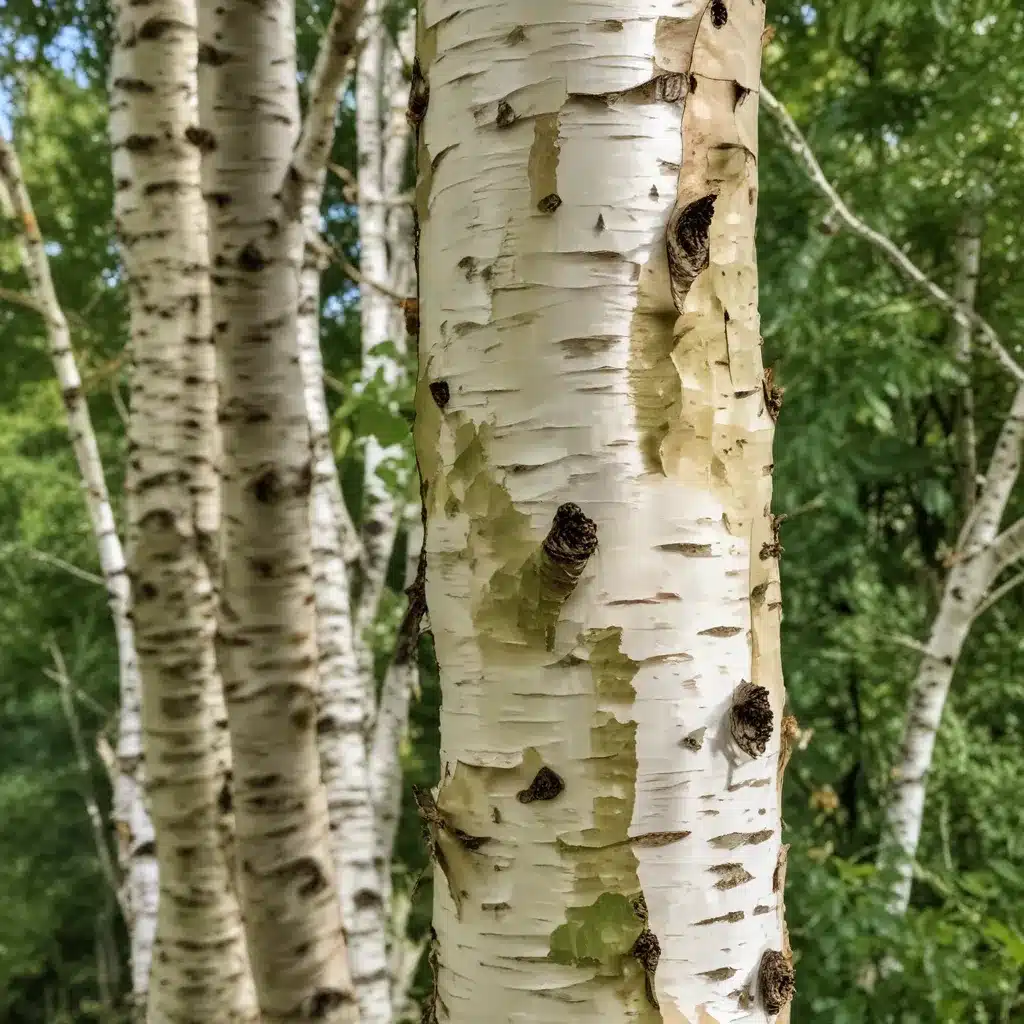
The river birch (Betula nigra) is a captivating deciduous hardwood tree that thrives in the ever-changing landscapes of riparian ecosystems. As a member of the Betulaceae family, this resilient species has adapted to excel in a variety of challenging environments, from flood-prone wetlands to arid upland sites. Its remarkable ability to withstand the whims of nature has earned the river birch a prominent role in the intricate tapestry of forest communities.
Adaptive Traits and Characteristics
The river birch’s success can be attributed to its impressive suite of adaptive traits. Perhaps its most defining characteristic is its exceptional tolerance to flooding and waterlogged soils, allowing it to dominate areas prone to periodic inundation. Its flexible root system, which can extend both deep into the earth and sprawl across the surface, helps the tree anchor itself securely and access crucial moisture during times of drought or soil saturation.
Equally impressive is the river birch’s drought and heat resistance. While many trees struggle to cope with the stresses of a warming climate, this species has evolved mechanisms to conserve water and thrive in drier conditions. Its thin, papery bark and the ability to shed leaves during periods of environmental stress enable the river birch to minimize water loss and maintain vigor even in the face of prolonged dry spells.
Complementing its environmental adaptations is the river birch’s remarkable growth rate and regenerative capacity. Capable of adding several feet to its height each year, this fast-growing tree quickly establishes a strong presence in the landscape. Furthermore, its resilience extends to its ability to recover from disturbances, with the capacity to sprout new growth from its trunk and roots, even after severe damage.
Ecological Role and Habitat
The river birch is a keystone species within its native riparian habitats, which include the banks of rivers, streams, and wetlands across the eastern United States. In these dynamic ecosystems, the tree plays a vital role in erosion control and soil stabilization, using its extensive root network to anchor the soil and prevent the banks from washing away during high-water events.
Beyond its structural importance, the river birch provides a valuable wildlife habitat and food source. Its peeling, papery bark offers shelter and nesting sites for a variety of birds, while its seeds and catkins are eagerly consumed by numerous species of small mammals and birds. The tree’s lush foliage also serves as a critical food source for numerous insect species, supporting a diverse array of local fauna.
Human Uses and Applications
In addition to its ecological significance, the river birch has long been prized for its practical and aesthetic qualities by human communities. As an ornamental landscape tree, the river birch is a popular choice for its graceful, multi-trunked form, distinctive exfoliating bark, and vibrant fall foliage. Its resilience and adaptability make it a suitable selection for urban and suburban settings, where it can thrive in challenging soil conditions and withstand the stresses of human activity.
The wood of the river birch has also found a variety of utilitarian applications. While not as commercially valuable as some other birch species, the timber has been used for furniture, cabinetry, and various wood products. Historically, the tree’s bark and leaves have also been used in traditional medicine for their purported health benefits.
Challenges and Conservation
Despite the river birch’s impressive adaptability, the species is not immune to the threats posed by a rapidly changing environment. Climate change, with its associated shifts in precipitation patterns and temperature extremes, can strain the tree’s resilience, potentially leading to increased susceptibility to pests and diseases.
Conservation efforts aimed at preserving the river birch and its associated habitats are crucial. Organizations like TriCounty Tree Care work tirelessly to promote the planting and proper management of this valuable tree species, ensuring its continued presence in urban and rural landscapes. Through public education, sustainable forestry practices, and collaborative initiatives, these efforts help to safeguard the river birch’s ecological role and aesthetic appeal for generations to come.
Birch Tree Cultivation and Management
Cultivating and managing river birch trees requires a nuanced understanding of their specific needs and preferences. When selecting a planting site, it is essential to choose an area with well-drained, moist soil that can accommodate the tree’s thirsty roots. Providing ample space for the tree’s spreading canopy and considering its eventual height are also crucial considerations.
Proper pruning and maintenance are key to maintaining the river birch’s health and aesthetic appeal. Regular thinning of the multiple trunks and removal of damaged or diseased branches can help to encourage a balanced, attractive form. Monitoring for pests and diseases, such as the bronze birch borer, and implementing appropriate control measures are also essential for the tree’s long-term well-being.
For those interested in propagating river birch trees, various propagation techniques can be employed, including seed collection, hardwood cuttings, and tissue culture. Obtaining high-quality, locally sourced plant material from reputable nurseries can also help ensure the success of river birch plantings.
The river birch’s remarkable adaptability, ecological significance, and aesthetic charm make it a valuable addition to any landscape. As we navigate the challenges posed by a changing climate, the resilience and versatility of this captivating hardwood offer hope for the future of our forests and communities. By understanding and celebrating the secrets of the river birch, we can ensure its continued presence in the ever-evolving tapestry of the natural world.


